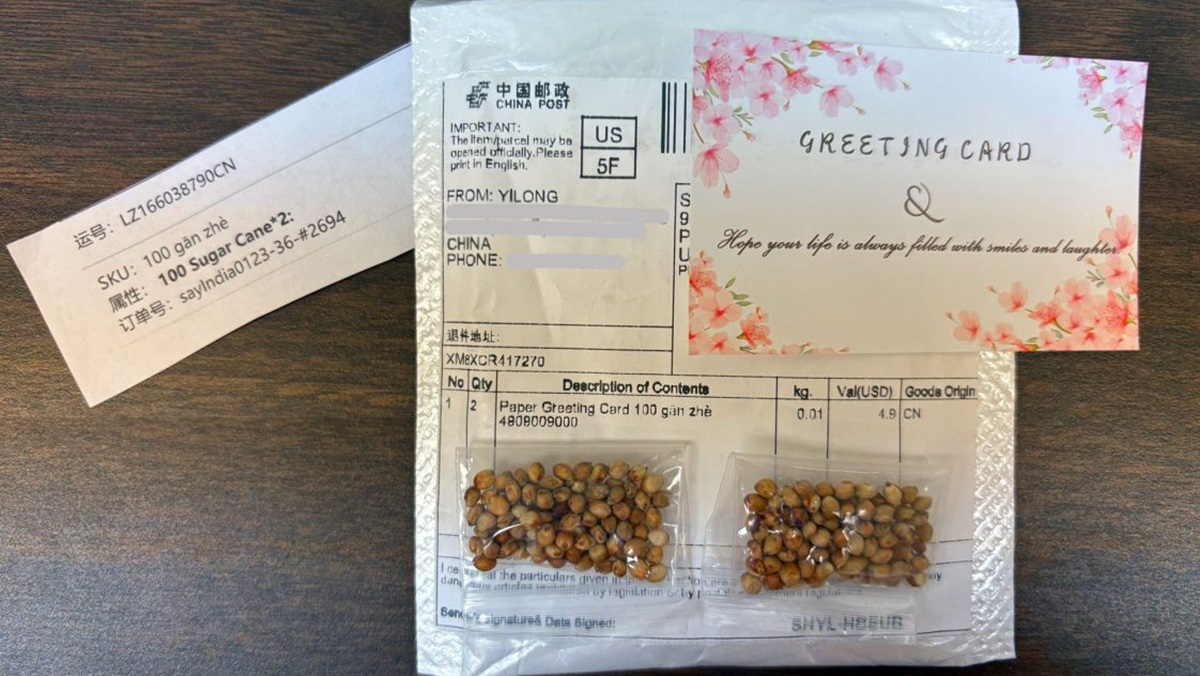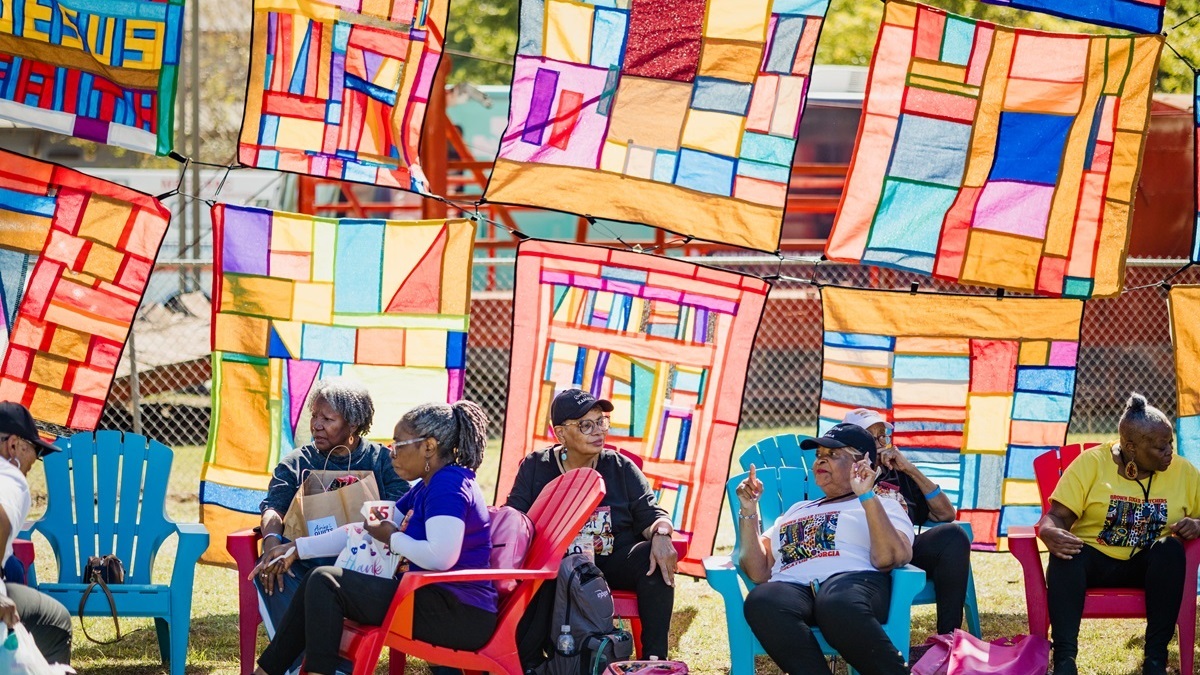Birmingham birthed from ‘weeds and briars’ 150 years ago today

The Saks Building in 1944 and today at 19th Street and First Avenue North on the city's first lot bought by Andrew Marre in 1871. (Birmingham, Ala. Public Library Archives and Bob Blalock / Alabama NewsCenter)
The bright June day came for the marketing of Birmingham lots. These had all been numbered and wooden pins driven into the ground to mark the limits. The branch water flowed across them in undisputed right of way; the browsing cattle and the birds, feeding their unfledged broods in the boughs of the trees, were the sole visible occupants.
Many hopeful speculators had come, some of both sexes, and some who had walked for miles, because at the termini of one of the railroads they could find no conveyance, private or public. The initial day of the destiny of Birmingham opened clear and bright. The sale of lots was satisfactory. The first lot was bought by Major A. Marre. He may then be properly termed … The First Settler.
- From “Jefferson County and Birmingham, Alabama: Historical and Biographical,” published in 1887 by John Witherspoon DuBose.
Thus, the Elyton Land Company on June 1, 1871 – 150 years ago today – birthed Birmingham from a patchwork quilt of lots on 4,150 acres it had assembled in Jones Valley, Jefferson County.

Alabama NewsCenter is presenting a continuing series marking the 150th birthday of the city of Birmingham.
RELATED: Birmingham’s founding full of drama and paradox
RELATED: Birmingham officially launches its 150th anniversary celebration
RELATED: Miss Fancy the elephant returns triumphant to Birmingham’s Avondale Park
RELATED: Cholera and COVID: Birmingham’s two historic health crises
RELATED: Birmingham’s history captured in postcards from a century ago
Although not all the details from the early historical accounts of Birmingham’s founding are consistent, they all point to Maj. Andrew Marre as the buyer of the first lot sold in Birmingham: what is now Lot 12 in Block 99, a 50-by-100-foot parcel of land on the corner of First Avenue and 19th Street North in downtown.

The first lot sold in Birmingham, from Bond Book 1, 1871-1972, Elyton Land Company records. (Birmingham, Ala. Public Library Archives)
Depending on the source, Marre was either from Mississippi or New Orleans, and paid either $100 or $150 for the lot. And while June 1 is the day the Elyton Land Company office opened for the sale of lots, Jefferson County Probate Court records list May 31, 1871, as the filing date for the deed of sale for Marre’s lot. John C. Morrow, the probate judge at the time, noted the deed was recorded June 1, 1871. The deed lists the price Marre paid as $100.
Regardless what he paid, Marre and many others bought into the dream of a new industrial city rising from idle lands in Jefferson County, years before it became “the Magic City.”
The building of railroads after the Civil War and the area’s immense deposits of the raw materials needed to make iron and steel – coal, iron ore and limestone – led to the founding of Birmingham. In December 1870, a group of investors and promoters, most of them connected with the South & North Alabama Railroad, made their intentions known. They formed the Elyton Land Company “with a view to the location, laying off and effecting the building of a city at or near Elyton, in said county,” according to a document filed with the probate judge. The next month, they organized formally, elected directors and a president of the company, Col. James R. Powell, and adopted by-laws that said: “The city to be built by the Elyton Land Company near Elyton, in the County of Jefferson, State of Alabama shall be called ‘Birmingham.’”
While non-Native Americans had lived in Jefferson County for many decades – Elyton was a town with hundreds of people in 1870 – much of the land Birmingham’s founders chose as the site for the city was undeveloped or fallow.
“I remember we spent three days riding all over the ground on horseback,” Henry W. Milner said in Ethel Armes’ “The Story of Coal and Iron in Alabama” published in 1910. “Cousin John L. Milner, who was living then at Elyton, loaned father a couple of his horses, and I rode behind Colonel Powell. The place was cleared of stumps and trees, but not under cultivation at the time. It was just an old cornfield, all overgrown with weeds and briers.”
Milner, son of John T. Milner – the engineer who chose the site of Birmingham based on his recommendation for where the South & North Alabama Railroad would cross the Alabama & Chattanooga Railroad – noted a few “section houses” along the railroad tracks. “That was about all I could recall seeing.”
‘A rabbit drive’
“There was a swamp down by what is now Powell Avenue where they had a rabbit drive just a while before and caught 75 rabbits. That made a great impression on me. I never saw anything like the rabbits. Every step our horse took, seemed to me, a rabbit would start out of the ground.”
In “The Valley and the Hills: An Illustrated History of Birmingham and Jefferson County,” published in 1981, Leah R. Atkins wrote of Powell hiring young farmers to grade the streets after Major William P. Barker began staking off the lots, “offering them lots in lieu of payment, but he had few takers.”
“Most of the people in the valley doubted the city would grow or amount to much, and the farmers, who had their own land, preferred cash to lots staked off in a cornfield,” Atkins wrote.
The Birmingham Historical Society’s R.B. Henckell, writing in December 1951 in an unidentified Birmingham newspaper on file at the Birmingham Public Library, called Birmingham’s founding “a bold and courageous undertaking.”
“Neither railroad was completed and both were having financial troubles; no immediate establishment of industry in the district was foreseen; the Elyton Land Company had insufficient capital and the County already supported one town, Elyton, the county seat,” Henckell wrote in an article celebrating the city’s 80th anniversary.
Powell’s salesmanship saved the day, and the city. In the months leading up to the June 1, 1871, sale of lots, the “Duke of Birmingham,” as he became known, was hard at work selling the nonexistent city to anyone who would listen.
George M. Cruikshank in “A History of Birmingham and Its Environs,” published in 1920, wrote of Powell: “He was the best ‘advertising man’ in the South at that time and he proceeded promptly to make the new city known throughout the land, before a house was built.”
Atkins wrote that “with tremendous energy Colonel Powell began writing to newspapers, organizations, and friends across the state and nation announcing an auction sale of lots in the new city on June 1, 1871.”
“At this time when the name of Birmingham failed to appear on the map of Jefferson County … the riches of Birmingham were being advertised across the United States and Europe,” she wrote.
Powell’s efforts to sell Birmingham paid off.
“When the day came on which he had given notice that he would commence the sale of lots many eager purchasers were on hand, ready and anxious to buy property,” H.M. Caldwell wrote in “History of the Elyton Land Company and Birmingham Ala.” published in 1892. “Lots were rapidly sold and in a remarkably short space of time houses were springing up in all directions, where but a few months ago cotton and corn had been growing, and where the rail fences were still standing.”
One of those new houses was Marre’s, built south of the railroad reservation on the southwest corner of Avenue E and 19th Street. On Lot 12 in what became downtown, north of the railroads, he built a two-story stone building to house the Marre & Allen general store in partnership with J.A. Allen.

Lot 12 (highlighted) in Block 99 was the first lot sold in Birmingham. From W.B. Phillips Property Atlas. (Birmingham, Ala. Public Library Archives)
“’We brought to Birmingham the first goods offered to the public,’ according to Marre’s own story,” James R. Bennett wrote in “Historic Birmingham: An Illustrated History” published in 2008. “’There was not a house to be seen when the store was erected. I remember I used to pull fresh corn in the rear of the building while men were completing the structure.’”
Marre that first year was a founding member of the Birmingham Lodge No. 384 of Free and Accepted Masons and served on the city’s first Board of Aldermen, appointed by Gov. Robert Lindsay during the administration of Mayor Robert H. Henley. Marre was not elected to the board in 1873.
Financial success
While Marre may not have had much political success, his purchase of the city’s first lot helped him to financial success.
“His ample fortune has matured from the faith that was then in him,” DuBose wrote in his 1887 history of Jefferson County and Birmingham.
“The value of this property now, after some six or seven years steady growth of the city, may be indicated in the market value of the lot corner of First avenue and Twentieth street, one block away. The latter lot, unimproved, was sold recently for $1,000 per front foot. By corresponding ratio of increase Major Marre’s original investment of $150 would now command $100,000.”
Marre also was a member of the board of directors of the Birmingham Insurance Company, which organized in 1884, according to the Bhamwiki website.
Between 1872 and 1895, the Marre Building, in addition to housing the Marre & Allen general store, was home to the Ruby Saloon, as well as two jewelers, a lawyer, an insurance company, two real estate companies and stock brokers, according to Bhamwiki.
In May 1894, county probate records show, Marre agreed to a 10-year lease with Louis Saks for a new building to be erected on the lot as the new site of Louis Saks Clothiers, which at the time was a block away. In 1895, Saks’ store moved into the new three-story, almost 19,000-square-foot brick building on the lot owned by Marre, who died the next year.
A fire in the early 1900s heavily damaged the building – at the time the loss was estimated at $200,000 – but the building was rebuilt and Saks Clothing Store remained there until 1916, according to Bhamwiki. Saks moved a block away to a larger space at the northwest corner of 19th Street and Second Avenue North. (That building was torn down decades later to make way for the McWane Center.)
The building on Marre’s lot today remains known as the Saks Building. Since 1916, it has been home to a variety of businesses and agencies. They include, according to Bhamwiki, Ideal Millinery Cloak & Suit Store, Doster-Northington Drug Store, the Clothing Outlet, Morris Jewelers, Old Gold lunch counter, Indiana Gold & Silver Co. refiners, Anthony Carnaggio restaurant, Boxers Bakery & lunch room, European Bakery & Grill, The Underground nightclub and, more recently, Corporate Realty, Coyote Logistics and Childcare Resources. Current tenants are a Valley National Bank branch and Watkins & Eager law firm.
Nowhere to be found
The last names of many who played key roles in Birmingham’s early years – Caldwell, Henley, Linn, Milner, Morris, Powell – grace streets and buildings and parks in the city, but Andrew Marre’s name is almost nowhere to be found. There is no Marre Avenue or street or boulevard or, apparently, even a building anymore that bears his name, much less a city park.
There is, however, Marre & Allen Bar + Kitchen, named for Marre’s store, in the Birmingham Marriott Hotel on U.S. 280. The restaurant’s Facebook page mentions that Marre bought Birmingham’s first lot and erected a two-story building for his Marre & Allen store. Marriott Sales Manager Jill Kuerner said the hotel’s former general manager, whom she described as “somewhat of a local historian,” decided on the name.
“He thought it was appropriate to name the place after the person who helped put Birmingham on the map,” she wrote in an email. “It’s also a conversation piece and an opportunity to share some local history with our guests who are not from the area.”
At least there’s that recognition for Marre, one of early Birmingham’s prominent, successful businessmen and a member of its first Board of Aldermen. There is one more recognition that remains for Andrew Marre 150 years after the city’s founding: Birmingham’s First Settler.








